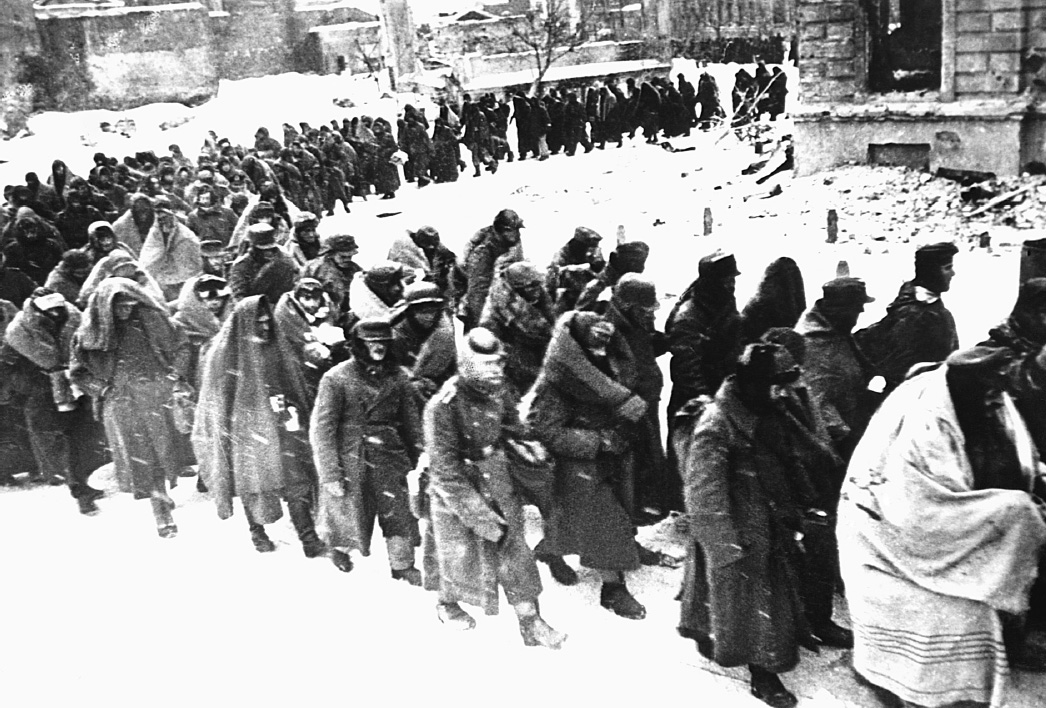A History of Western Society: Printed Page 927
A History of Western Society, Value Edition: Printed Page 933
The “Hinge of Fate”
While the Nazis and the Japanese built their savage empires, Great Britain, the United States, and the Soviet Union joined together in a military pact Churchill termed the Grand Alliance. This was a matter of chance more than choice. It had taken the Japanese surprise attack to bring the isolationist United States into the war. Moreover, the British and Americans were determined opponents of Soviet communism, and disagreements between the Soviets and the capitalist powers during the course of the war sowed mutual distrust. Stalin repeatedly urged Britain and the United States to open a second front in France to relieve pressure on Soviet forces, but Churchill and Roosevelt refused until the summer of 1944. Despite such tensions, the overriding goal of defeating the Axis powers brought together these reluctant allies.
In one area of agreement, the Grand Alliance concurred on a policy of “Europe first.” Only after Hitler was defeated would the Allies mount an all-out attack on Japan, the lesser threat. The Allies also agreed to concentrate on immediate military needs, postponing tough political questions about the eventual peace settlement that might have divided them. To further encourage mutual trust, the Allies adopted the principle of the unconditional surrender of Germany and Japan. This policy cemented the Grand Alliance because it denied Hitler any hope of dividing his foes. It also meant that Soviet and Anglo-American armies would almost certainly be forced to invade and occupy all of Germany, and that Japan would fight to the bitter end.
The military resources of the Grand Alliance were awesome. The United States harnessed its vast industrial base to wage global war and in 1943 outproduced not only Germany, Italy, and Japan, but all of the rest of the world combined. Great Britain became an impregnable floating fortress, a gigantic frontline staging area for a decisive blow to the heart of Germany. After a determined push, the Soviet Union’s military strength was so great that it might well have defeated Germany without Western help. Stalin drew heavily on the heroic resolve of the Soviet people, especially those in the central Russian heartland. Broad-based Russian nationalism, as opposed to narrow communist ideology, became a powerful unifying force in what the Soviet people appropriately called the Great Patriotic War of the Fatherland.
The combined might of the Allies forced back the Nazi armies on all fronts (see Map 27.3). Through early 1942 heavy fighting between British and Axis forces had resulted in significant German advances in North Africa. At the Second Battle of El Alamein (el al-uh-MAYN) in October–November 1942, however, British forces decisively defeated combined German and Italian armies and halted Axis penetration of North Africa. Winston Churchill called the battle the “hinge of fate” that cemented Allied victory. Shortly thereafter, an Anglo-American force landed in Morocco and Algeria. These French possessions, which were under the control of Pétain’s Vichy government, went over to the Allies. Fearful of an Allied invasion across the Mediterranean, German forces occupied Vichy France in November 1942, and the collaborationist French government effectively ceased to exist.
After driving the Axis powers out of North Africa, U.S. and British forces invaded Sicily in the summer of 1943 and mainland Italy that autumn. Mussolini was overthrown by a coup d’état, and the new Italian government publicly accepted unconditional surrender. In response, Nazi armies invaded and seized control of northern and central Italy, and German paratroopers rescued Mussolini in a daring raid and put him at the head of a puppet government. Facing stiff German resistance, the Allies battled their way slowly up the Italian peninsula. The Germans still held northern Italy, but they were clearly on the defensive.
The spring of 1943 brought crucial Allied victories at sea and in the air. In the first years of the war, German submarines had successfully attacked North Atlantic shipping, severely hampering the British war effort. New antisubmarine technologies favored the Allies. Soon massive convoys of hundreds of ships were streaming across the Atlantic, bringing much-needed troops and supplies from the United States to Britain.
The German air force had never really recovered from its defeat in the Battle of Britain. With almost unchallenged air superiority, the United States and Britain now mounted massive bombing raids on German cities to maim industrial production and break civilian morale. By the war’s end, hardly a German city of any size remained untouched, and many — including Dresden, Hamburg, and Cologne — lay in ruins.
Great Britain and the United States had made critical advances in the western theater, but the worst German defeats came at the hands of the Red Army on the eastern front. Although the Germans had almost captured the major cities of Moscow and Leningrad in early winter 1941, they were forced back by determined Soviet counterattacks. The Germans mounted a second and initially successful invasion of the Soviet Union in the summer of 1942, but the campaign turned into a disaster. The downfall came at the Battle of Stalingrad, when in November 1942 the Soviets surrounded and systematically destroyed the entire German Sixth Army of 300,000 men. In January 1943 only 123,000 soldiers were left to surrender. Hitler, who had refused to allow a retreat, suffered a catastrophic defeat. For the first time, German public opinion turned decisively against the war. In summer 1943 the larger, better-equipped Soviet armies took the offensive and began to push the Germans back along the entire eastern front (see Map 27.3).
